The world of the extremely small is unlike anything we encounter on a daily basis. Unless we think about it, we would not consider that rocks or people could be in more than one place at once. Whether or not we are aware of their location, they are only in one place. Before we open the box to check, we don’t consider a cat that is confined inside to be both alive and dead. But for quantum things like atoms or subatomic particles such dualities are the norm. These items are in what is known as a superposition of states before we examine them. Each of which has a given probability. If we repeatedly measure their position we will almost certainly discover it in one of these states. We must turn to philosophy if we are to gain a deeper knowledge of how nature behaves in the domain of quantum physics
Is the particle actually in a superposition of states; or is this way of thinking we developed to represent how we measure things? This is the fundamental conundrum that still vexes or inspires physicists. A position on this issue involves selecting a certain interpretation of quantum mechanics and our worldview. It is crucial to emphasize how well quantum physics functions mathematically. It does a fantastic job of describing the experiments. As a result, we are no longer discussing whether quantum mechanics is a valid theory or not. Whether it accurately captures physical reality as it exists or not is the question.
Numerous ways to view the quantum world
Despite the fact that quantum physics is a valid theory, it is fiercely contested just like philosophy. There are numerous philosophical traditions and complex counterarguments. But in their broadest sense, the schools are divided into two schools of thought. They both rely on the well-known wavefunction; the main character of the quantum world.
The ontic interpretation
Those who believe that the wavefunction describes reality as it is and that it is a component of reality can be found in one corner. This school of thought is known as ontic interpretation. They believe the wavefunction’s absolute square represents the likelihood of measuring this or that physical property. Although it doesn’t describe something tangible like the particle’s location or momentum, the superpositions it does characterize are a part of reality.
The epistemic interpretation
Those who believe that the wavefunction is not a component of reality can be found in the other corner. They see a mathematical framework that enables us to interpret the results of our experiments. The epistemic interpretation is another name for this school of thought that derives from the philosophical concept of epistemology. According to this theory, the only way to understand what occurs at the quantum level is through measurements. The laws of quantum physics are excellent at describing the outcomes of these measurements. It is not necessary to grant the wavefunction any sort of reality as it only symbolizes potentialities, or potential results of a measurement. It maintains that humans do not understand the nature of the wavefunction; just its effects.
It illustrates to us that we accept the superpositions of potential states coexisting before a measurement is conducted. It is just a description of what we are unable to know. The system only exists in the state that is measured when it is measured, and nothing else. It raises the idea that determining reality may involve the measurer in some way. But for all intents and purposes, what counts is that the hypothesis holds up.
Splits in the quantum highway
The ghost of scientific objectivity is what the ontic versus epistemic debate really comes down to. The idea that observers could determine anything about the nature of reality is utterly reprehensible to onticists. Is it really possible for an experimenter to tell if an electron is present or absent? There is another ontic school of thought known as the Many Worlds interpretation. It states that that when a measurement is made, all potential outcomes are fulfilled. However we can only directly access one of them; the world in which we currently live. The notion here is that measurement splits reality into a variety of universes. Each of which realizes a different potential experimental result.
These numerous worlds are, regrettably, inaccessible to observers in other worlds. There have been plans to test the Many Worlds through experimentation, but there are several barriers to overcome. These include the need for the lab-based quantum state of macroscopic entities. Also, it is unclear how to assign various probabilities to the various worlds in relation to the experiment’s results. The observer will only be able to survive in one universe.
Other ontic strategies call for adding reality to the process. For example including a pilot wave with the explicit purpose of directing the particles into their outcomes. This has not been a popular idea amongst scientists however.
The agent and reality
Interpretations differ just as much on the epistemic side. The dominant interpretation is the Copenhagen one. It claims that the wavefunction is merely a tool for describing what matters most; the results of scientific measurement. Divergent opinions exist regarding the nature of the observer, how the act of measurement defines the physical characteristics of the item being viewed, and where the line between classical and quantum reality should be drawn.
What matters most
The fascinating findings of quantum physics depict a universe that never ceases to challenge and capture our imaginations. Just as it has for the past century, it keeps surprising us. Like philosophy, quantum physics will always have people arguing their points from different sides.
